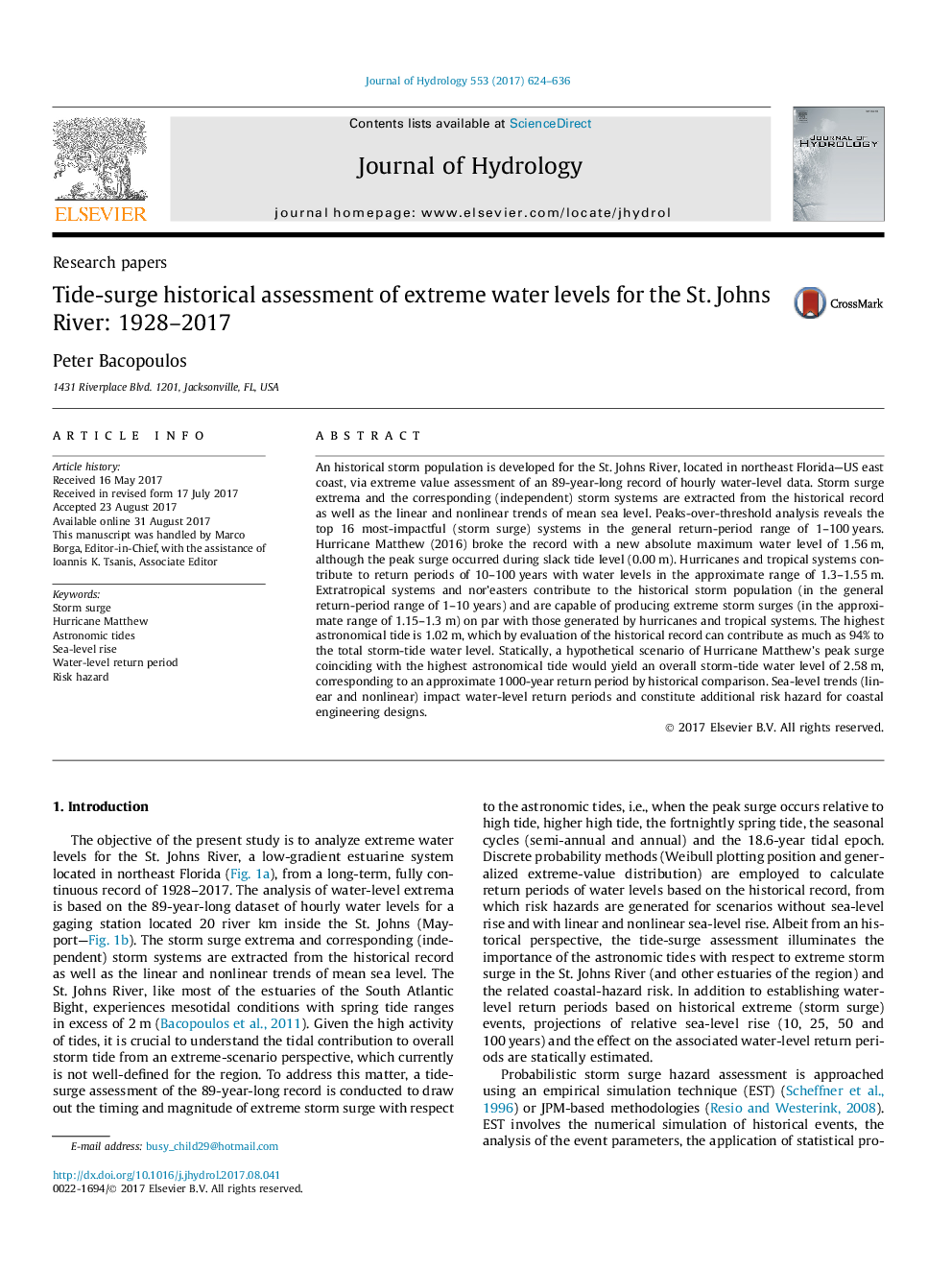| کد مقاله | کد نشریه | سال انتشار | مقاله انگلیسی | نسخه تمام متن |
|---|---|---|---|---|
| 5770843 | 1629901 | 2017 | 13 صفحه PDF | دانلود رایگان |
عنوان انگلیسی مقاله ISI
Tide-surge historical assessment of extreme water levels for the St. Johns River: 1928-2017
ترجمه فارسی عنوان
ارزیابی تاریخی آب و هوای شدید آب رودخانه سن جانسن: 2018-1928
دانلود مقاله + سفارش ترجمه
دانلود مقاله ISI انگلیسی
رایگان برای ایرانیان
کلمات کلیدی
موج طوفان، طوفان متی، جزایر نجومی، افزایش سطح آب دریا، دوره بازگشت آب، خطر خطر،
موضوعات مرتبط
مهندسی و علوم پایه
علوم زمین و سیارات
فرآیندهای سطح زمین
چکیده انگلیسی
An historical storm population is developed for the St. Johns River, located in northeast Florida-US east coast, via extreme value assessment of an 89-year-long record of hourly water-level data. Storm surge extrema and the corresponding (independent) storm systems are extracted from the historical record as well as the linear and nonlinear trends of mean sea level. Peaks-over-threshold analysis reveals the top 16 most-impactful (storm surge) systems in the general return-period range of 1-100Â years. Hurricane Matthew (2016) broke the record with a new absolute maximum water level of 1.56Â m, although the peak surge occurred during slack tide level (0.00Â m). Hurricanes and tropical systems contribute to return periods of 10-100Â years with water levels in the approximate range of 1.3-1.55Â m. Extratropical systems and nor'easters contribute to the historical storm population (in the general return-period range of 1-10Â years) and are capable of producing extreme storm surges (in the approximate range of 1.15-1.3Â m) on par with those generated by hurricanes and tropical systems. The highest astronomical tide is 1.02Â m, which by evaluation of the historical record can contribute as much as 94% to the total storm-tide water level. Statically, a hypothetical scenario of Hurricane Matthew's peak surge coinciding with the highest astronomical tide would yield an overall storm-tide water level of 2.58Â m, corresponding to an approximate 1000-year return period by historical comparison. Sea-level trends (linear and nonlinear) impact water-level return periods and constitute additional risk hazard for coastal engineering designs.
ناشر
Database: Elsevier - ScienceDirect (ساینس دایرکت)
Journal: Journal of Hydrology - Volume 553, October 2017, Pages 624-636
Journal: Journal of Hydrology - Volume 553, October 2017, Pages 624-636
نویسندگان
Peter Bacopoulos,
